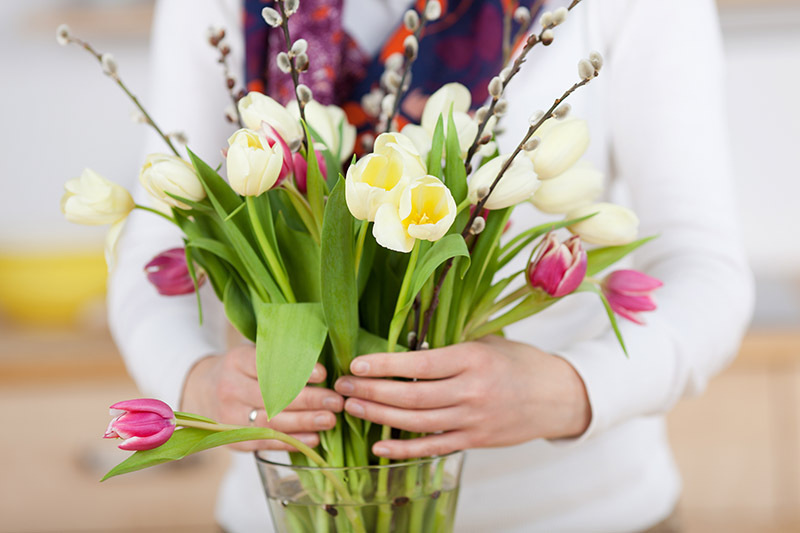Your Ultimate Guide to Flourishing Orchids
Posted on 02/07/2025
Your Ultimate Guide to Flourishing Orchids
Orchids are among the most captivating and diverse plants in the world. With their delicate blooms, intricate structures, and vibrant colors, these exotic beauties have enthralled gardeners and plant lovers for centuries. However, it's a common misconception that orchids are difficult to grow and require special care. In this ultimate guide to flourishing orchids, we'll dispel those myths and equip you with all the knowledge you need to help your orchids thrive, whether you're a beginner or a seasoned grower.
Why Choose Orchids as Houseplants?
Orchids make exceptional indoor plants thanks to their longevity, wide variety of colors, and the unique appeal they add to any living space. Let's explore the main reasons why flourishing orchids deserve a place in your home:
- Endless Variety: With over 25,000 species and 100,000 hybrids, there's an orchid for every style and taste.
- Long Blooming Period: Many orchid varieties blossom for weeks, even months, with proper care.
- Air Purifying: Orchids help clean and improve indoor air quality.
- Low Maintenance: Despite their exotic reputation, most orchids need minimal care if you follow a few key steps.

Understanding Different Types of Orchids
Before bringing home your first orchid, it's essential to understand the major types that can flourish indoors:
1. Phalaenopsis (Moth Orchids)
Phalaenopsis orchids are ideal for beginners and one of the easiest orchids to grow. Their large, flat blooms and wide range of colors make them a centerpiece in any collection.
2. Cattleya Orchids
Known as the "Queen of Orchids," Cattleyas are famous for their fragrant, ruffled flowers that often appear in bold, striking hues.
3. Dendrobium Orchids
Dendrobiums are highly adaptable, featuring slender stems and vibrant, long-lasting blooms. Some species thrive in cooler temperatures, making them versatile additions to an orchid enthusiast's home.
4. Oncidium Orchids
Oncidium, or "Dancing Lady" orchids, are recognized by their sprays of small, exuberant flowers. They often prefer bright but indirect light and slightly more humidity.
5. Vanda Orchids
Vandas are renowned for their vivid, multi-colored blooms and large plant size. They require higher humidity and lots of bright light, making them a bit more challenging but exceptionally rewarding.
Creating the Perfect Environment for Thriving Orchids
The secret to flourishing orchids lies in replicating their natural habitat. Let's break down the essential elements for providing optimal growing conditions:
1. Lighting Requirements
- Bright, Indirect Sunlight: Most orchids, especially Phalaenopsis, thrive in filtered sunlight. A spot near an east- or west-facing window is ideal.
- Too much light: Leaves may scorch, turning yellow or developing sun spots.
- Too little light: The plant may not bloom, and leaves will appear dark green.
Tip: If natural light is insufficient, consider using full-spectrum grow lights.
2. Temperature and Humidity
- Daytime temperatures: Most orchids prefer 65-75?F (18-24?C).
- Nighttime temperatures: 55-65?F (13-18?C).
- Humidity: Target 40-60%. Increase humidity by misting or using a pebble tray with water.
3. Air Circulation
Good airflow is vital to prevent fungal diseases and keep orchids growing healthy. If your room is stuffy, a small fan or slightly open window helps maintain air movement.
4. Potting Media and Containers
- Specialized Orchid Mix: Unlike standard houseplants, orchids don't grow in soil. Use bark chips, sphagnum moss, peat, perlite, or a blend designed for orchids.
- Pots: Choose pots with ample draining holes to avoid waterlogged roots. Clear pots help monitor root health and moisture.
The Foundations of Orchid Care: Watering, Feeding and Repotting
Orchids aren't demanding, but understanding their fundamental care routines ensures vibrant, healthy, and flourishing blooms. Let's dive into the details:
Watering Your Orchid the Right Way
- Consistency is key: Most orchids require watering once a week, but always let the potting mix dry out slightly between waterings.
- Water thoroughly: Soak the potting media completely, allowing water to drain out of the bottom.
- Avoid standing water: Excess water and suffocated roots are the primary causes of root rot.
- Use tepid water: Cold water can shock the roots and discourage blooming.
Tip: The "ice cube" watering method is often discouraged because it can keep roots too cold and fails to fully saturate the medium.
Fertilizing for Spectacular Blooms
- Feed regularly: Use a balanced orchid fertilizer (such as 20-20-20) at half-strength every two to four weeks during the growing season.
- Flushing: Once a month, rinse the potting mix with plain water to remove salt buildup from fertilizers.
- Rest periods: Reduce or stop feeding when your orchid is dormant (after blooming, in winter).
Repotting for Long-Term Health
- How often? Repot orchids every 1-2 years or when the potting media breaks down.
- Signs it's time: Roots growing out of the pot, decayed potting medium, or poor drainage.
- How to: Gently remove old media, trim away dead roots, and repot with fresh orchid mix.
Pro Tip: Always repot your orchid just after it finishes flowering.
Encouraging Lush Blooms: Orchid Flowering Secrets
Getting orchids to rebloom is a rewarding milestone for any grower. Here's how you can maximize your orchid's flowering potential:
Understand the Bloom Cycle
Most orchids require a period of cooler temperatures or more darkness to trigger flowering. Research your specific orchid type to tailor your care routine accordingly.
- Phalaenopsis: A slight nighttime drop in temperature often prompts flower spikes.
- Cattleya: Benefit from short dry periods after the new growth matures.
- Dendrobium: Generally bloom best when given ample light and a slight chill at night.
Pruning Flower Spikes
Once flowers fade, some orchids (like Phalaenopsis) may rebloom from existing spikes:
- Cut the spike above a visible "node" to stimulate new flower stem growth.
- Remove spent stems from other orchid types to encourage new spikes.
Common Orchid Problems and Solutions
No orchid journey is complete without the occasional challenge. Fortunately, most issues are easy to diagnose and fix. Here are the top problems and solutions for flourishing orchids:
Yellowing Leaves
- Cause: Overwatering, lack of light, or natural aging.
- Solution: Adjust watering or move your orchid to a brighter location.
Root Rot
- Cause: Waterlogged potting medium.
- Solution: Remove the orchid from its pot, trim dead roots, and repot with fresh bark mix.
Pests (Mealybugs, Scale, Spider Mites)
- Cause: Poor air circulation, excessive humidity.
- Solution: Wipe leaves with a damp cloth, use insecticidal soap, and increase air movement.
Lack of Flowers
- Cause: Insufficient light, improper temperatures, or no rest period.
- Solution: Provide brighter, filtered light, and ensure a slight temperature drop at night.
Advanced Orchid Growing Tips
If you have mastered the basics, try these advanced strategies to take your flourishing orchid collection to the next level:
- Experiment with hybrid varieties for unique flower shapes and colors.
- Mount orchids on bark or cork pieces for a natural, jungle-like presentation.
- Try semi-hydroponic growing with LECA (lightweight expanded clay aggregate) for superior aeration and water control.
- Join a local orchid society to connect, share, and learn from fellow enthusiasts.

Frequently Asked Questions About Orchids
- Do orchids need direct sunlight?
No. Most thrive in bright, indirect light. Direct sun can scorch their leaves. - How long do orchid blooms last?
Blooms can last from two weeks to several months, depending on the species and care. - Why are my orchid leaves wrinkled?
It's often due to underwatering or root problems. Check roots and water properly. - Are orchids toxic to pets?
Most common orchids are non-toxic to cats and dogs. - How can I get my orchid to rebloom?
Provide the right temperature drop, increased light, and withhold fertilizer during rest periods.
Conclusion: Cultivating Your Flourishing Orchid Paradise
Growing thriving, flourishing orchids is within reach for anyone willing to understand the unique needs of these spectacular plants. With the right blend of light, humidity, feeding, and patience, your orchids will reward you with enchanting flowers, year after year. Remember to observe your plants closely, adjust care as needed, and don't be dissuaded by occasional setbacks. Each success is a step toward your own lush orchid sanctuary.
Start your orchid journey today! With this comprehensive guide, from potting tips to flowering secrets, you now have all the tools to enjoy healthy, vibrant, and beautiful orchids that will transform your home into a botanical wonder.
Latest Posts
Dive into the World of Birth Flowers and Their Messages for You
Essential Hydrangea Care Tips for Vibrant Blooms
Your Ultimate Guide to Flourishing Orchids
Unveiling the Mystery: The Tradition of Giving Red Roses on Valentine's Day





